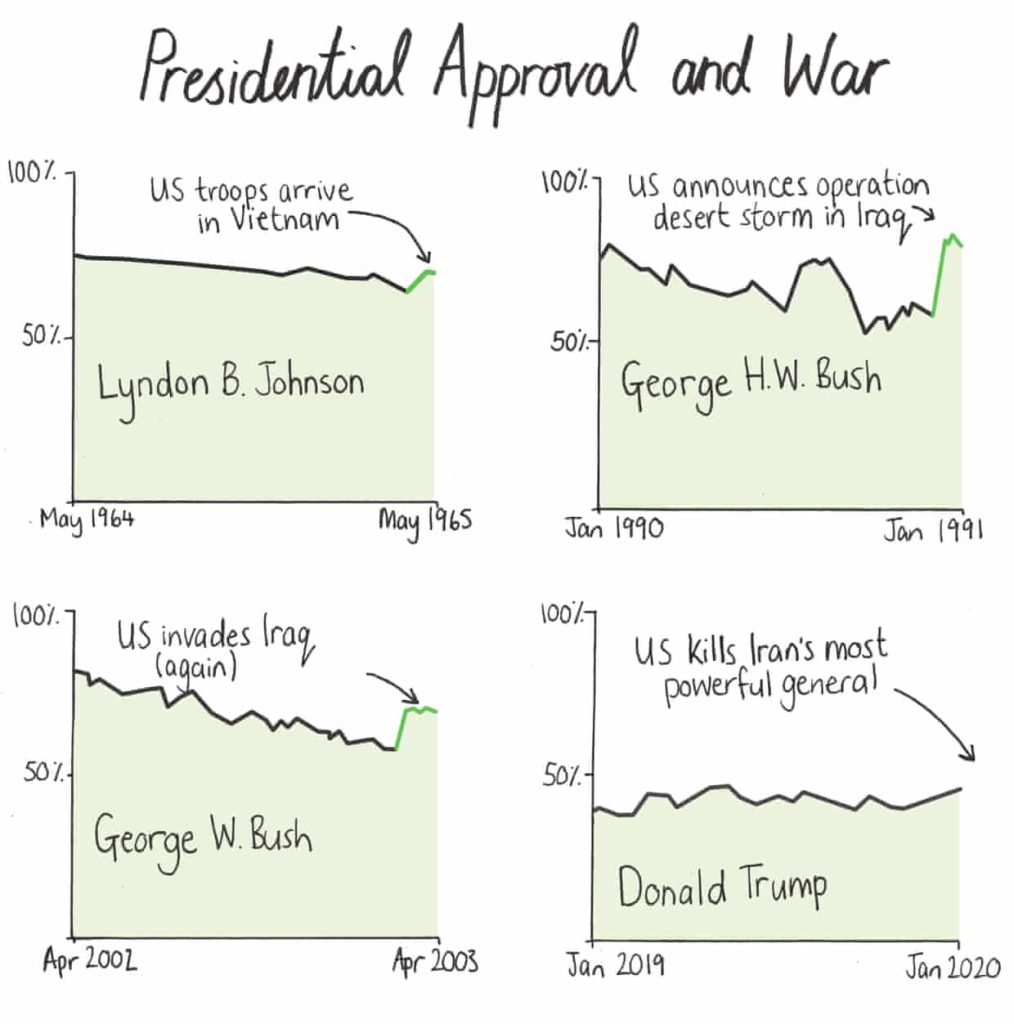
The above graphic includes four, line charts that show U.S. presidential approval ratings during their time in office. The first three charts are of former U.S. Presidents, Johnson, H.W. Bush, and W. Bush. All three charts show a sharp uptick in approval ratings immediately following an act of war between the U.S. and another country. The fourth chart shows the current approval ratings for Donald Trump and the U.S. recent attack Irans highest military official is noted on the x-axis without any data after that moment.
The audience here is anyone concerned with U.S. politics. Given that the article is written for the Guardian, it likely that a liberal person or a moderate conservative would be interested in this information. It’s less likely that this graphic would sway someone who is supportive of this administration and so I would not include them as part of the intended audience.
By juxtaposing information from three similar, historical situations the graphic speculates that the U.S. actions in Iran are motivated by President Trump’s low approval ratings. However, it does not explicitly say this. The graphic serves two purposes: validating the beliefs of someone who is already critical of the current administration and providing food-for-thought for a moderate or independent voter.
I think this method of conveying information is effective because the article does not tell the reader what to think but instead provides a small puzzle for the reader to solve. Solving the puzzle, allows the reader to come to their own conclusion. This is a powerful tool because people are generally more inclined to believe something that they think they came up with themselves — despite the fact that there is only one conclusion that you can arrive at with the information available in the graphic. The current political climate is such that discussions are often heated between opposing viewpoints and little is actually heard. This method of conveying information is less combative and assumes the reader’s intelligence.